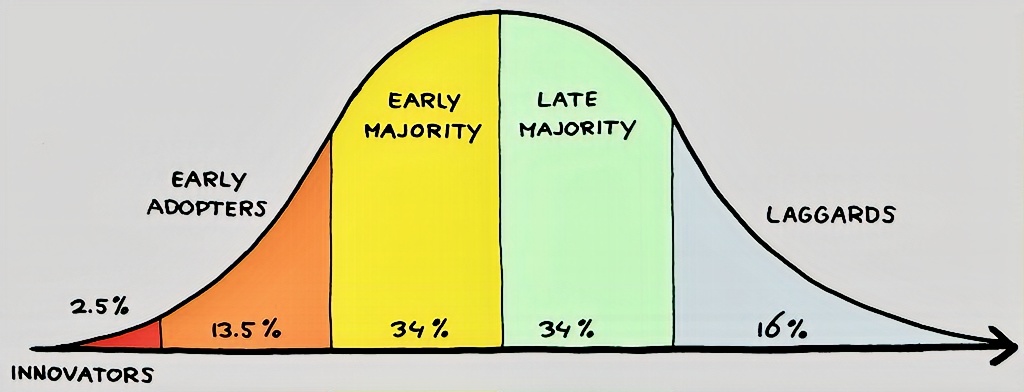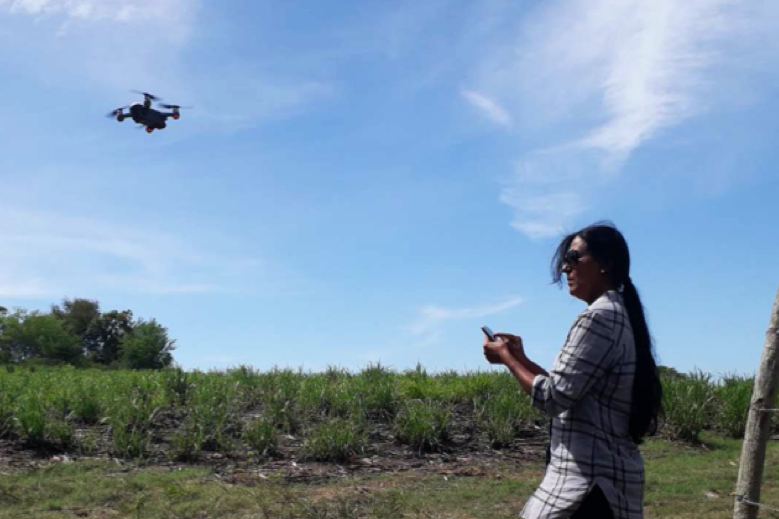I just returned from a field trip to the north, east and west of Fiji. While on this trip, I had the opportunity to observe and talk with numerous rural farmers. I enjoyed kava with rural villagers and interacted with leadership of the large cooperative associations. I also spoke to countless market women as well as drivers and middle managers.
After time spent with this variety of beneficiaries of the work that the United Nations Development Programme does, I came away with one big idea that I want to share with you: Diffusion of innovation theory applies just as forcefully to development challenges as it does to commercial enterprise. The market (yes, beneficiaries of development solutions are a “market”) is not a monolith. If we are to achieve ever greater success in accelerating progress towards the Sustainable Development Goals, we need to adopt a structured and detailed way to describe beneficiary segments.
Sharing a bowl of kava with rural farmers of Labasa in Vanua Levu, which is Fiji's Northern Island (Photo: UNDP/Victor Ladele)
Diffusion of Innovation (DOI) Theory, developed by E.M. Rogers in 1962, is one of the oldest social science theories. It originated in communication to explain how, over time, an idea or product gains momentum and diffuses (or spreads) through a specific population or social system. The end result of this diffusion is that people, as part of a social system, adopt a new idea, behavior, or product. Adoption means that a person does something differently than what they had previously (i.e., purchase or use a new product, acquire and perform a new behavior, etc.). The key to adoption is that the person must perceive the idea, behavior or product as new or innovative. It is through this that diffusion is possible.
Adoption of a new idea, behavior, or product (i.e., "innovation") does not happen simultaneously in a social system; rather it is a process whereby some people are more apt to adopt the innovation than others. Researchers have found that people who adopt an innovation early have different characteristics than people who adopt an innovation later.
When promoting your Globaldev innovation to a target population, it is important to understand the characteristics of the target population that will help or hinder adoption of the innovation.
There are five established adopter categories, and while the majority of the general population tends to fall in the middle categories, it is still necessary to understand the characteristics of the target population. When promoting an innovation, there are different strategies used to appeal to the different adopter categories.
1. Innovators - These are people who want to be the first to try the innovation. They are venturesome and interested in new ideas. These people are very willing to take risks and are often the first to develop new ideas. Very little, if anything, needs to be done to appeal to this population.
Kaur using a drone to inspect her farm (Photo: UNDP/Victor Ladele).
Mrs. Kaur is one of such. Although she farms sugarcane in a rural part of Western Fiji. She also raises pigs. Although she is assumed to be in need of “empowerment”, she already maximizes productivity even with lean resources by using a drone to inspect her farm acreage. She also monitors her piggery with CCTV cameras, thereby decreasing incidences of theft. These twin challenges – theft of animals and supervision of a large plot of land -- have served as barriers to other women thriving in the sugarcane farming business.
Other established adopter categories are the:
2. Early Adopters - These are people who represent opinion leaders. They enjoy leadership roles, and embrace change opportunities. They are already aware of the need to change and so are very comfortable adopting new ideas.
3. Early Majority - These people are rarely leaders, but they do adopt new ideas before the average person. That said, they typically need to see evidence that the innovation works before they are willing to adopt it.
4. Late Majority - These people are skeptical of change, and will only adopt an innovation after it has been tried by the majority. Strategies to appeal to this population include information on how many other people have tried the innovation and have adopted it successfully.
5. Laggards - These people are bound by tradition and very conservative. They are very skeptical of change and are the hardest group to bring on board.
The latest Human Development Report 2019 finds that “in every country many people have little prospect for a better future. They are without hope, purpose or dignity, watching from society’s sidelines as they see others pulling ahead to ever greater prosperity”. These inequalities in human development are a veritable roadblock to achieving the 2030 Agenda for Sustainable Development. However, this is also a time of immense opportunity to act with greater ambition.
In his book “Tipping Point” Malcolm Gladwell likens the spread of ideas, products and behaviors to the spread of a viral infection: for years, only a few people are affected (or infected), but then, within a short period of time, it becomes an epidemic. Furthermore, the book goes on to assert that there are several crucial factors that play a role in triggering epidemics. They are easy to recognize and can be consciously used to spread ideas, products or behaviors. Same applies to rollout of programs that promote economic development. The point, as I learned after three weeks in rural Fiji, is that the market is not a monolith. While these approaches are not new in the private sector, they are very underutilized in the development sector. Project design will do better if conceived as continuous cycles of prototyping, researching customers, and reshaping your service offering. Digital tools that are available now make this a far easier undertaking than even just five years ago.
The process of delivering development solutions and products is in reality, messy and complicated. However, targeting users in a systematic way will increase the chances that our new innovative solutions grow in use and popularity. The field of development is littered with great products that failed despite being great ideas, but leveraging human nature and recognizing characteristics of people who adopt an innovation sooner rather than later, will surely reduce the incidence of stalled ventures.

 Locations
Locations


